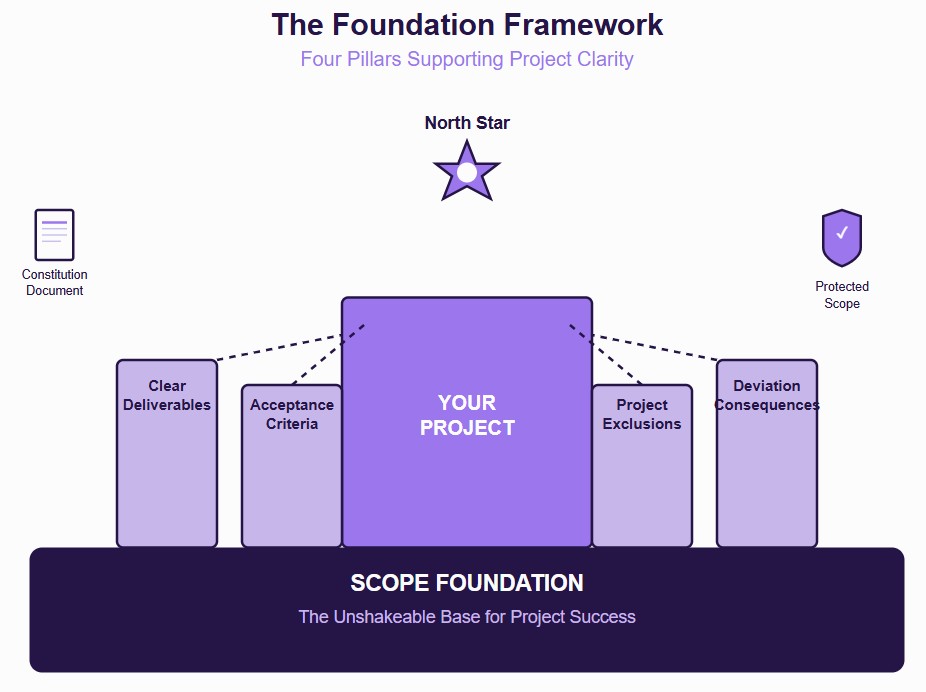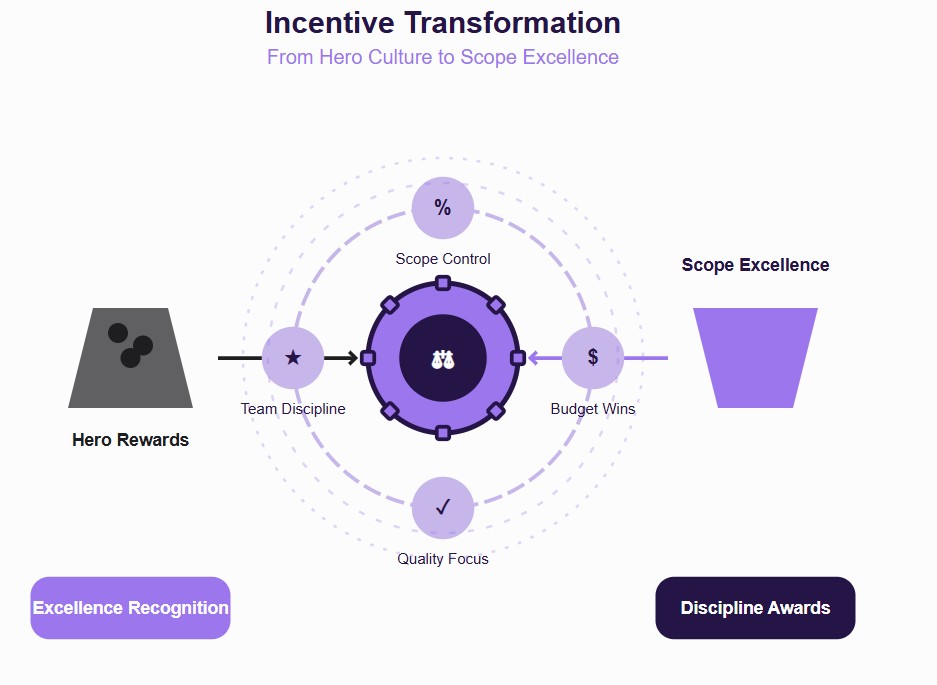Gold plating has quietly derailed million-dollar projects, not because of failure, but because of doing too much. Extra features that no one asked for often snowball into delays, rework, and budget blowouts.
Understanding how to avoid gold plating in project management means drawing a hard line between value and vanity—before well-meaning efforts turn into high-cost mistakes.
In this article, we will explore:
- Apply practical tactics to prevent project overdelivery
- Recover fast when unapproved work slips into delivery
- Understand which changes add value and which add risk
6 proven strategies to stop gold plating from derailing your projects
Gold plating in project management happens when team members or managers add extra features or enhancements to a project without formal approval, even though those extras were never requested by the client. While the intention is often positive ("let’s go above and beyond"), the results are usually the opposite: increased costs, delayed timelines, and unhappy stakeholders.
If you want to deliver projects that meet expectations, without wasting time, money, or trust, here’s exactly how to avoid gold plating at every stage:
1. Build an unshakeable scope baseline
Your scope baseline is your project's North Star; the definitive document often rooted in the initial project charter that keeps everyone aligned on what you're building and, equally important, what you're not building. Think of it as your project's constitution that no one can amend without proper procedures.
Start by creating a detailed scope statement that explicitly outlines:
- Every deliverable with crystal-clear specifications
- Acceptance criteria for each milestone
- What's specifically excluded from the project (often more important than what's included)
- The consequences of scope deviations
Make this document visible and accessible to every team member. Post it in your project workspace, reference it in meetings, and treat it as the ultimate decision-making tool. When someone suggests an "enhancement," your first response should always be: "Is this in our scope baseline?"

2. Fortify your change control process
A robust change control process is your shield against unauthorized scope additions. Without proper change management, even the smallest suggestions can snowball into major project disruptions.
Implement these non-negotiable change control steps:
- Formal change request submission for any proposed additions
- Impact assessment covering time, cost, and resource implications
- Stakeholder approval workflows before implementation begins
- Documentation requirements for every approved change
Remember: No change is too small to bypass this process. That "quick five-minute addition" often requires testing, documentation, integration work, and ongoing support—turning your five-minute task into a multi-hour commitment that wasn't budgeted or planned.
3. Educate your team on the gold plating trap
Knowledge is your first line of defense. Many team members engage in gold plating simply because they don't understand the difference between helpful initiative and project-damaging scope creep.
Conduct regular training sessions that cover:
- Gold plating definition and real-world examples from your industry
- The distinction between gold plating and scope creep (team-initiated vs. client-requested changes)
- Financial impact of unauthorized additions on project profitability
- When and how to escalate improvement suggestions through proper channels
Create a culture where asking permission is celebrated, not discouraged. Team members should feel comfortable proposing enhancements, but through the right process, not by simply implementing them.

4. Implement rigorous quality assurance monitoring
Your QA and UAT phases are critical checkpoints where gold plating often surfaces. During testing, teams frequently discover "opportunities for improvement" and make unauthorized modifications without considering the broader impact.
Establish strict monitoring protocols:
- Compare deliverables against original specifications during every review cycle
- Flag any features or enhancements not explicitly documented in the scope
- Require justification and approval for any deviations discovered during testing
- Document all variations and their impact on the timeline and budget
Train your QA team to ask the crucial question: "Was this requirement in the original scope?" If the answer is no, it requires immediate escalation, regardless of how "beneficial" it might seem.
5. Align incentives with scope adherence
What gets measured and rewarded gets repeated. If your team receives praise for adding extra features but no recognition for staying within scope, you're inadvertently encouraging gold plating behavior.
Restructure your recognition and incentive systems:
- Celebrate projects completed within the original scope and budget
- Recognize team members who identify and escalate potential scope additions properly
- Measure and report scope adherence as a key performance indicator
- Include scope discipline in performance reviews and project assessments
Stop rewarding the "hero mentality" where team members gain recognition for adding unauthorized features. Instead, make scope adherence a badge of honor that demonstrates professional discipline and client respect.

6. Channel stakeholder feedback through official routes
Stakeholder input is valuable, but only when it flows through proper channels. Allowing stakeholders to directly request changes from team members bypasses your change control process and opens the door to unlimited scope expansion.
Establish clear communication protocols:
- All stakeholder feedback must go through the project manager
- Team members should politely redirect stakeholder requests to official channels
- Document every stakeholder interaction and its potential scope implications
- Regular stakeholder check-ins should focus on approved deliverables, not wish lists
This isn't about being inflexible; it's about maintaining professional project governance that protects both your team and your stakeholders from the chaos of uncontrolled scope growth.
Your reputation as a project manager rests not on how many extras you can squeeze in, but on how reliably you can deliver what you promise. Master these six strategies, and you'll transform from a project manager who struggles with scope creep into one who consistently delivers predictable, successful outcomes that build long-term stakeholder confidence.
Damage control: What to do after gold plating has already happened
Even the most disciplined project teams can fall into the gold plating trap. Whether it was an eager developer, a well-meaning designer, or a misaligned team decision, you’ve now added features or enhancements that weren’t approved. The damage is done. But what matters next is how you respond.
Here’s exactly what to do to mitigate the fallout, restore trust, and prevent it from happening again.

Conduct an immediate project health assessment
Time is your enemy when gold plating strikes. The longer unauthorized work continues, the deeper the financial and timeline damage becomes. Your first priority is conducting a comprehensive damage assessment to understand exactly what you're dealing with.
Start with a complete scope audit:
- Document every unauthorized addition discovered in the project
- Quantify the time already invested in gold-plated features
- Calculate the remaining effort required to complete these additions
- Assess the integration complexity of removing unauthorized features
Evaluate the current project status against your original baseline. How much has the timeline slipped? What's the current budget burn rate? Are there dependencies that make removing the additions more complex than initially adding them?
Create a detailed project impact assessment that includes both direct costs (developer time, resources) and indirect costs (delayed deliverables, missed market opportunities, potential penalty clauses). This documentation becomes crucial for all subsequent stakeholder discussions and recovery planning.
Master stakeholder communication under pressure
How you communicate the gold plating discovery can make or break your project recovery. Your approach determines whether stakeholders become allies in the solution or adversaries seeking blame.
Prepare your communication strategy:
- Schedule an immediate stakeholder meeting with options, not just bad news
- Present three recovery paths with clear pros and cons for each
- Frame conversations around business impact rather than technical details
- Use quantified language: "This adds 3 weeks to delivery" vs. "This complicates architecture."
Lead with transparency and solutions. Present the situation as: "We've discovered unauthorized scope additions, and here are three paths forward." Option A: Remove additions to stay on timeline. Option B: Integrate them with scope change approval. Option C: Partial integration with modified timelines.
Document every stakeholder decision and get written approval for the chosen recovery approach. This protects your team from future accusations and ensures everyone understands the approved changes.
Explore strategic cost recovery opportunities
Gold plating doesn't always mean total financial loss; smart project managers can turn unauthorized additions into profitable scope expansions or valuable lessons for future projects.
Evaluate business value and recovery options:
- Assess the value of completed gold-plated features to stakeholders
- Negotiate scope change approval that converts unauthorized work into billable components
- Consider partial cost recovery through reduced timeline penalties or future project credits
- Document detailed scenarios for organizational learning and improved estimation
Strategic negotiation approaches: If stakeholders find unauthorized functionality valuable, convert gold plating into approved scope changes. Even if they don't want to pay for additions, you might negotiate reduced penalties for delays or credit toward future work in exchange for enhanced functionality.
Capture lessons learned for organizational improvement. While immediate cost recovery might not be possible, detailed gold plating documentation helps improve estimation accuracy and change control processes, potentially saving thousands in prevented future incidents.
Build bulletproof prevention systems
The best recovery includes ensuring this situation never happens again. Use the current crisis as an opportunity to strengthen your project governance and team education programs.
Implement immediate process improvements:
- Daily scope validation during team standups and sprint reviews
- Required approval workflows for any work not documented in current plans
- Real-time project tracking that flags efforts exceeding estimated hours
- Weekly scope baseline reviews comparing delivered features against approved requirements
Strengthen team education and prevention measures: Conduct training sessions helping team members understand the difference between helpful initiatives and project-damaging scope violations. Create clear escalation procedures so team members know exactly how to propose improvements through proper channels.
Establish scope guardian roles where specific team members monitor adherence to approved requirements and immediately flag potential gold plating scenarios. This creates accountability and early warning systems for future projects.
Transform crisis into stronger client relationships
How you handle gold plating recovery can strengthen stakeholder trust if managed properly. Clients often remember how you handled problems more than whether problems occurred.
Position yourself as stakeholder protection:
- Demonstrate stronger controls implemented specifically to safeguard their investment
- Provide proactive health reports showing scope adherence and early warning systems
- Emphasize commitment to their requirements over team preferences
- Transform the incident into proof of mature project governance
Relationship strengthening strategies: Use the experience to prove your commitment to stakeholder success rather than team assumptions. Offer transparent project monitoring that provides visibility into scope adherence and potential issues before they become problems.
Remember: Recovery success isn't measured by perfection; it's measured by how quickly you identify problems, communicate transparently, and implement solutions that protect stakeholder interests while strengthening future project delivery.
Know your enemy: The critical differences between gold plating, value engineering, and scope creep
Not all project additions are created equal. While gold plating, scope creep, and value engineering all involve changes to your original project plan, understanding their fundamental differences can save your project from disaster—or help you leverage legitimate improvements that benefit stakeholders.
The project manager's quick reference guide
Why these distinctions matter for project success
Gold plating is your silent project killer. Team members add unauthorized features thinking they're being helpful, but without client approval or formal documentation, these additions create technical debt, timeline delays, and budget overruns that can torpedo even well-planned projects.
Scope creep often masquerades as "small requests." When clients casually mention additional features during meetings, the informal nature creates confusion about what's approved versus what's simply discussed. Without proper change management, these "quick additions" accumulate into major project disruptions.
Value engineering is the only safe path to project enhancement. When improvements go through formal evaluation, stakeholder approval, and proper documentation, they become legitimate project enhancements that add measurable value rather than hidden costs.
Draw the line between value and vanity
Gold plating might feel like overdelivering, but it often leads to wasted effort, blown budgets, and lost trust. The true mark of a skilled project manager isn’t doing more; it’s doing exactly what’s needed with discipline and clarity.
By reinforcing scope, aligning your team, and using change control as your safeguard, you protect both your outcomes and your reputation. Choose value over vanity, every time.



_light%201.png)





